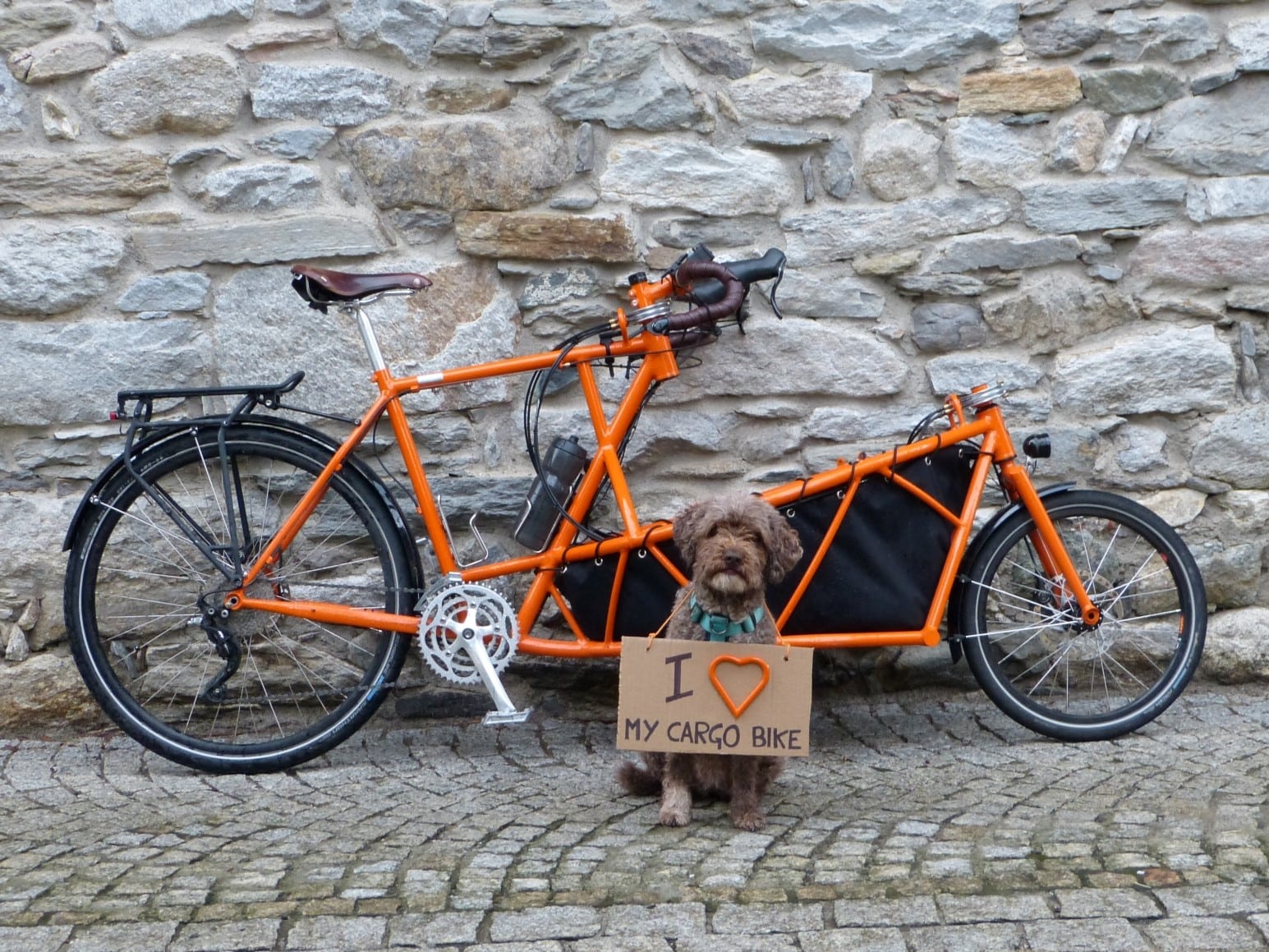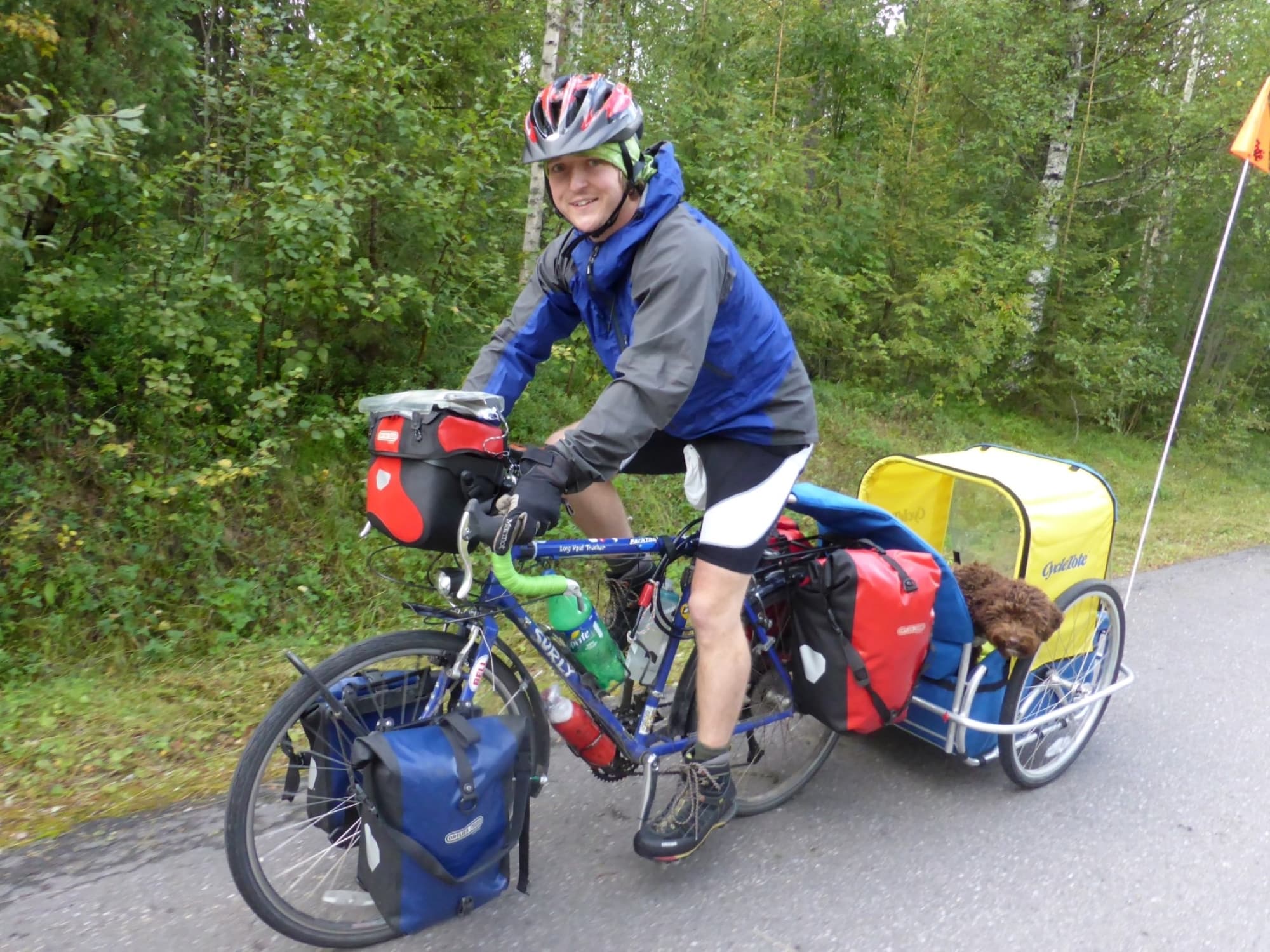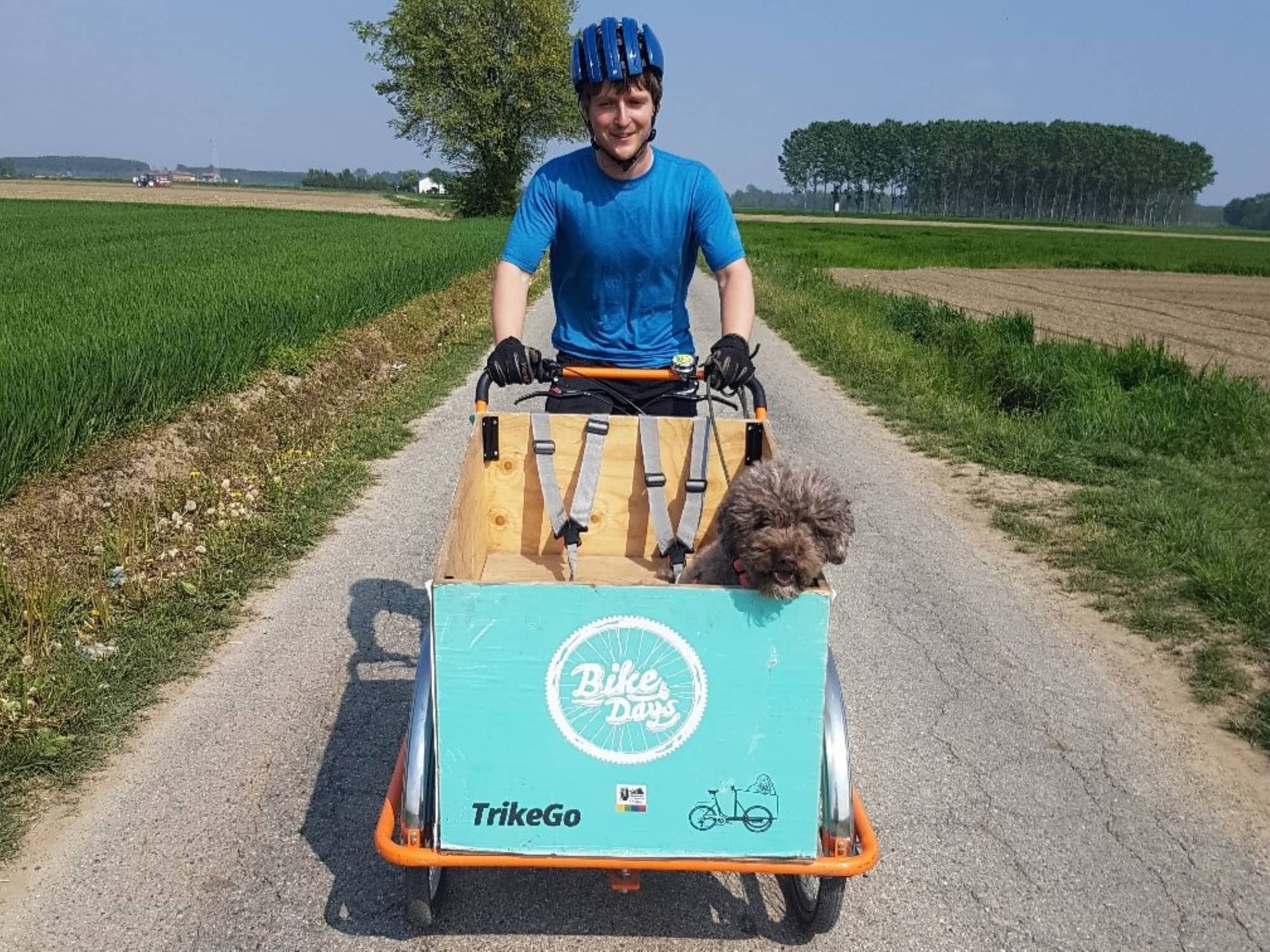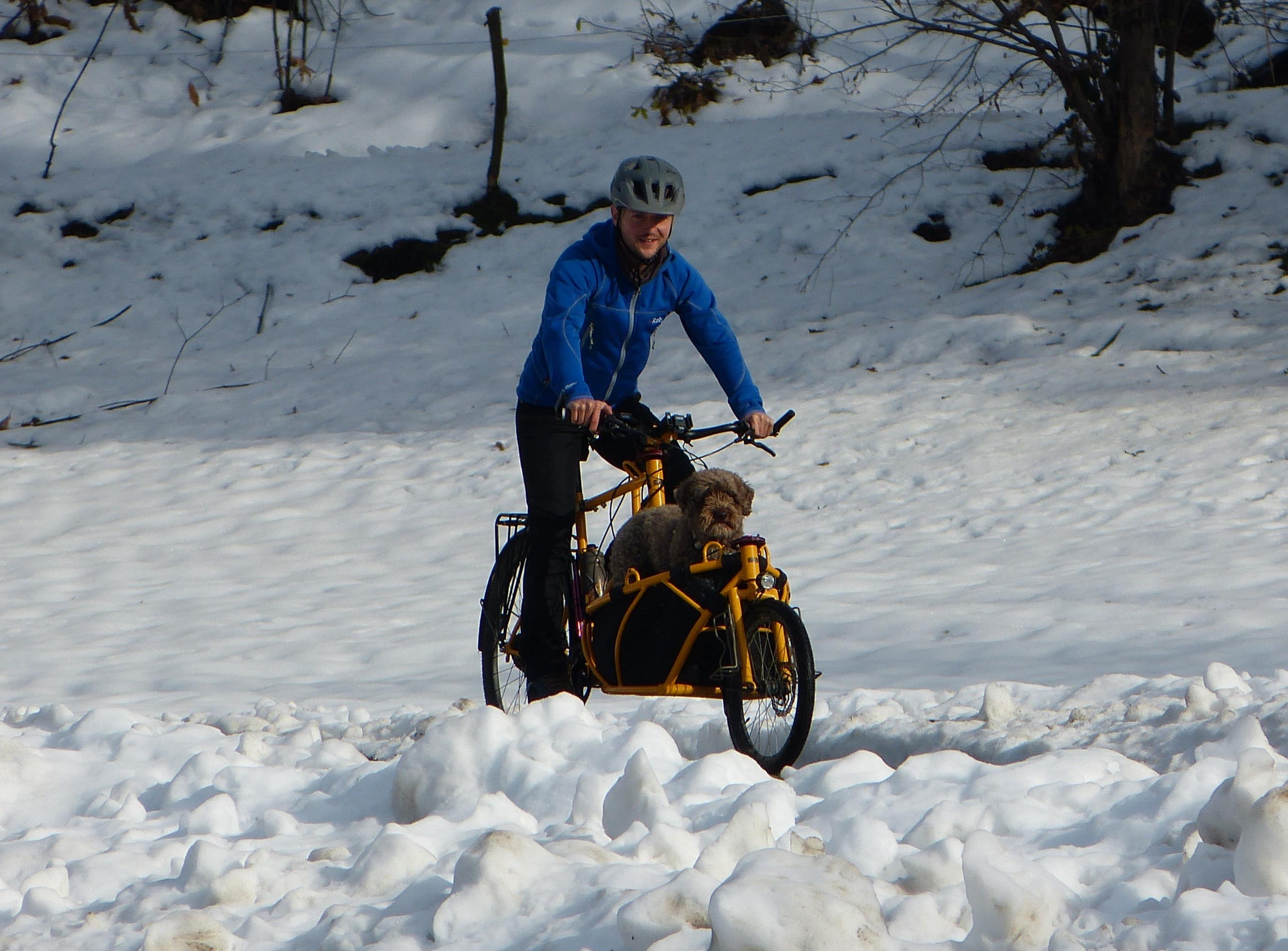
Dogs on bikes
Since my first trip, in which I cycled up the Great Glen with my sister drinking far too much wine, I have always enjoyed cycle touring. It quickly became my preferred holiday style, and it’s even how I met my wife. It was natural, therefore, that long before getting a dog, I had started considering how I could take my dog cycle touring.
The obvious choice was a trailer: I had a nice touring bike that fit me well, throwing a trailer on the back seemed to be easiest solution. Given it was going to do a fair number of kilometres a year, I did my research and got a good one. While waiting for my trailer to arrive, I was convinced I had found the perfect solution!
Unfortunately, I found out that cycle touring with a dog in a trailer wasn’t so simple. I didn’t enjoy cycling on the road with a trailer that I couldn’t see, and Zola (my dog, named after the great Gianfranco) didn’t like being in the trailer. Not only I couldn’t see her, which was bad in itself, but she made sure to convey her displeasure in a particularly clear manner to everyone I cycled past. I didn’t particularly like using that trailer. It was hard to judge the width of the trailer while cycling down the road, which was not very nice, and one of the wheels of the trailer would sometimes fall off the side of the road. The spring effect of the trailer pulling back on the bike made my lovely bike less fun to ride (especially up hill), there was a lot of rolling resistance, and it was also a pain to manoeuvre around bollards and such like. But mainly, Zola hated it. She cried and tried to get out every time I stopped. We did a tour of Finnish Lapland and a trip in Croatia, but cycle touring with Zola in the trailer was no holiday.

For a while, the trailer sat in the shed, and it felt like our cycle touring days were over before they really got started. It was all a bit shit. Cycle touring is a wonderful thing, and it had all the ingredients of something that me and my dog could enjoy together. But it seemed rather hopeless.
At the time, we lived in Turin. I don’t particularly like cities, but one positive of living in one is that you have everything at a stone’s throw from you. While out and about, we came across a bike workshop that rented cargo trikes. And well, we thought we’d give it a go. We went for a day trip to Pinerolo by cargo trike. The trike was heavy, hard to ride, and quite unstable going round corners; we pedalled hard all day making slow progress. Eventually, we got there. I was exhausted, but Zola had had a great day! She could stand at the front and look out ahead, and I could see her and tell her not to jump out to chase cats and/or squirrels. She loved it! We had almost found our solution!

Later, we found a bike shop in Verona that rented two-wheeled cargo bikes. The first we tried was a Douze. It was wonderful! It had cable steering, it was much lighter than the cargo trike, it was far more fun to ride than either the cargo trike or the bike–trailer combination, and it was pretty stable. We did a tour of three days in the hills around Verona, but despite it being a huge step forward, it was not perfect; it was still pretty heavy and hard work up the hills, and it didn’t feel particularly fun to ride. It was clear that this bike wasn’t designed to take dogs on cycle trips, or indeed be used for long cycle trips, but it was clear that this was the way forward.
It is for this reason that I designed and built my cargo bike: I wanted to have the perfect machine to take my dog cycle touring. I wanted her to enjoy cycle touring as much as me. I also wanted a cargo bike that was relatively light and had a big, low-down cargo bay. I wanted a steel cargo bike because I’ve always loved the feel of steel bikes and steel has excellent fatigue resistance. I knew I wanted a trellis design and a cargo bay with sufficient depth so as to maximize stiffness. I wanted cable steering, like on the Douze, as it gives design flexibility, a good range of steering, and a nice feel to the steering. And I knew I wanted the possibility of having a roof.
I had spent a decade working in academia researching structural design, so I had a pretty good knowledge of the principles of structural design and how to analyse the performance of a structure. Eight prototypes and 30,000 km later, I now have what I think is the perfect dog-touring cargo bike. It’s also excellent for the weekly shop.

Advantages of trailers:
Pretty cheap if you already have the right bike.
You still have a normal bike when you remove the trailer.
It is easier to transport a bike and trailer rather than a cargo bike.
Advantages of cargo bikes:
Far more fun to ride.
Less rolling resistance and no spring effect of the trailer pulling you back.
Able to see the dog in the cargo bay and develop more connection with the dog.
Safer – you can monitor what the dog is doing and better evaluate the width of the bike.
Easier to manoeuvre.
You’ll always have the cargo bay on your bike.
If you have any questions/comments about this post, please contact me here.